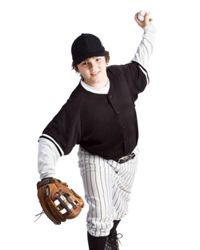Take me out to ballgame -- sure, but how do I win once I get there?
Baseball is famously known as a game within a game. For every game, there's an inning to win. For every inning, there are at least three at-bats from each side. And every time the ball is pitched, there's a little battle between the hitter, the pitcher and the players in the field.
Advertisement
With all these games going on at once, it's no wonder that baseball "strategies" are numerous -- and easily dismissed. What works for a player might not be beneficial to the team as a whole (trying to stretch a double into a triple when you're behind), and what's best for a team might actually hurt a player's numbers (a sacrifice bunt to advance a runner).
So let's huddle up and figure out a few ways (not foolproof, but some good bets) to improve your baseball play. Game on.


